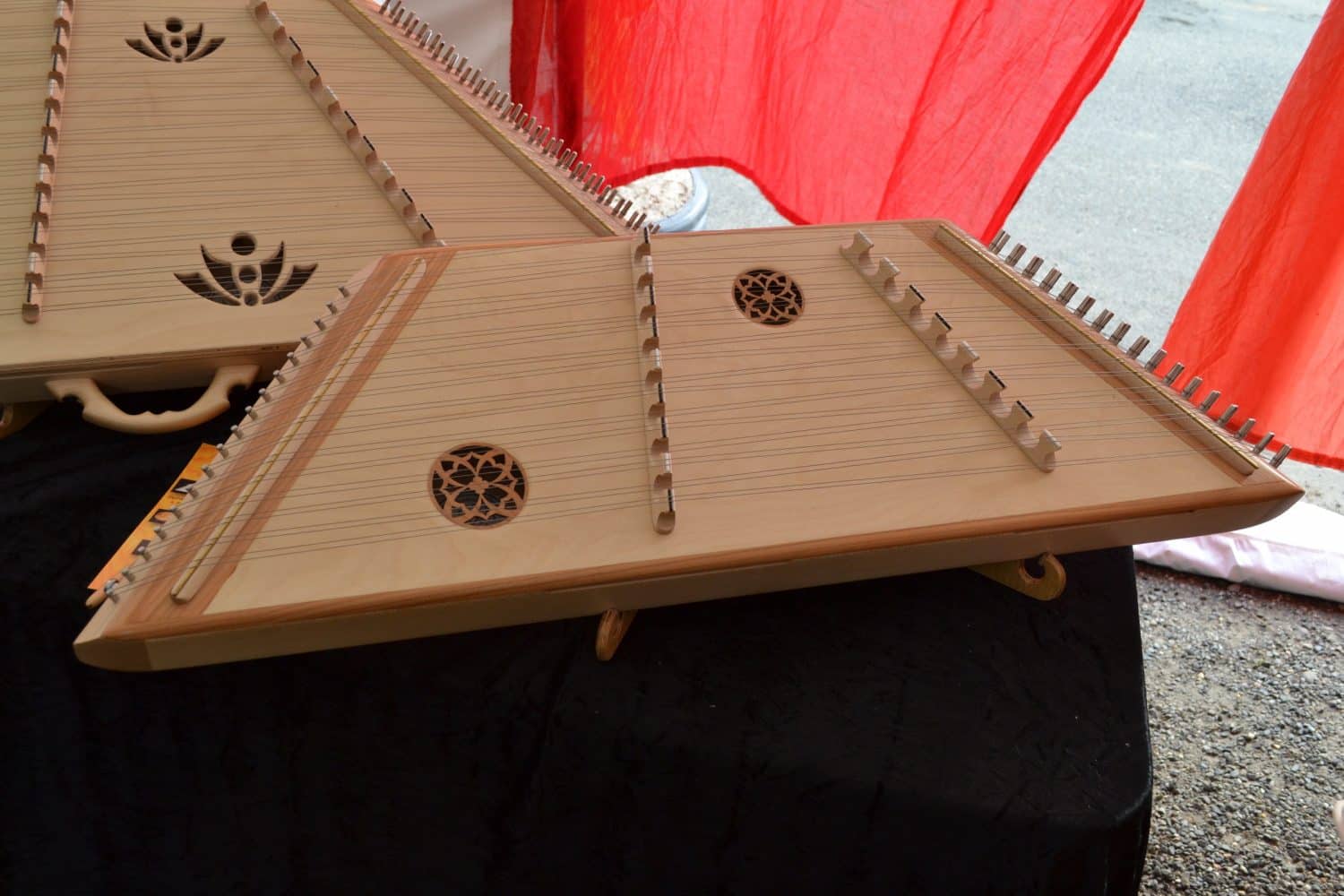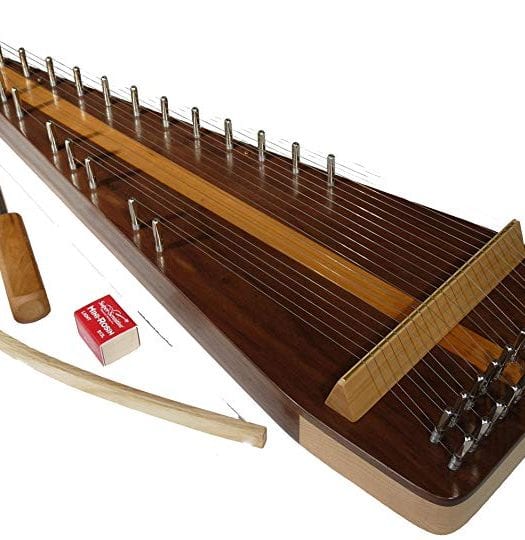What is a Plucked Psaltery?
What in the world is a plucked psaltery?
Unlike its more modern counterpart, the bowed psaltery, a plucked psaltery dates back to medieval times. A plucked psaltery is made from a raised board or wooden box. It has sound holes and strings that stretch parallel to its soundboard. The strings attach at each side by metal pins or wooden pegs. The strings are usually metal strings that are plucked and played somewhat like a harp. However, it’s not related to the harp. The plucked psalteries ancestors are harpsichords and spinets.
Plucked psalteries can be seen widely in sculpture, paintings, and manuscripts dating from the 12th century through to the 15th century. There are big varieties in the number of strings and the shapes of the instrument. Often, the strings are like lutes and run in courses of multiple strings.
The most famous type of psaltery in medieval times was a pig’s snout or hognose psaltery. These were made in a shape that resembled a pig’s profile. They were like scalloped trapezium shapes to be exact. These ‘hog nose’ psalteries were most popular throughout the Renaissance period and the Baroque period and were often heavily decorated with a painted trim and rosettes.
Psalteries had all but disappeared in Europe by the turn of the 19th century with related instruments beginning to take over. For example, the hammered dulcimer, the santur, the yangqin and the cimbalom. These introduced hammers to the strings instead of them being plucked.
The bowed psaltery came into use around the 20th century as a triangular-style instrument.
Why Play a Plucked Psaltery?
A psaltery is a great instrument for anyone to learn and it is quick to master. Due to their size, almost anyone can play a plucked psaltery so they are really versatile. The psaltery can be played in different positions – resting on the lap or against the chest are two ways of playing. This makes the instrument really appealing to all sorts of people, even those who aren’t very dexterous or who have limited mobility.
Just a few years ago, learning to play a plucked psaltery would be quite a challenge since there aren’t many teachers out there who know how to play this instrument. However, with the internet, especially sites like YouTube, you can find all sorts of tuition videos and guidance on how to play a plucked psaltery, which makes it much more interesting for people who are looking to learn a more unusual instrument.
What Makes a Good Plucked Psaltery?
A good plucked psaltery will be comfortable and easy to hold and produce a clear sound with good resonance. The sound a psaltery produces depends on its construction. For example, nickel-plated wound strings will have a different sound to bronze-plated wound strings. The materials for construction will also have an influence on its sound. Psalteries are made of softwood or hardwood. The good thing about plucked psalteries is that you can always upgrade the strings that come with the instrument.
A good plucked psaltery will have a finger hole at the back to allow you to keep a secure hold of your instrument. It should also be light enough for you to hold comfortably and to carry around without feeling too light and flimsy.
Just like when you buy any musical instrument, you should test it before parting with your money. If you’re buying online, be sure to read customer reviews too. These are always a good indication of how good a product and a company is.




